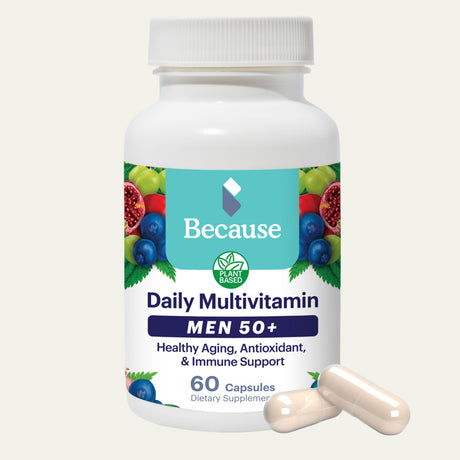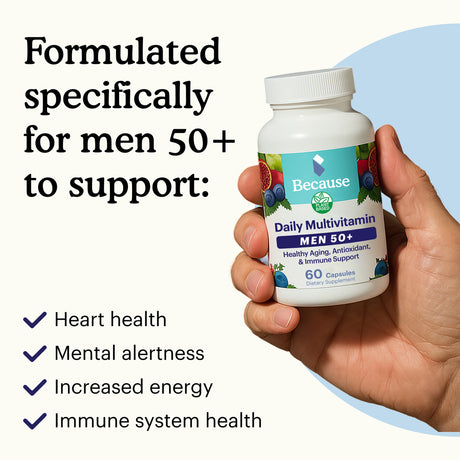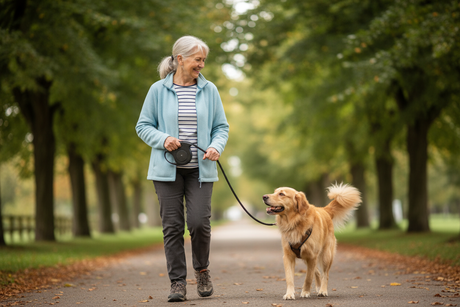As we get older, we tend to lose muscle mass. With this involuntary loss of muscle, you may do less physical activity because you feel weaker or more tired, and your core may also become weaker. The core is the foundation of our posture, balance, and support for our whole bodies. While muscle loss is normal with age, there are ways to prevent and even reverse the weakening of our core and abdominal muscles.
It’s important to maintain physical activity as we age, and core strengthening exercises are a key part of keeping us healthy and active as we get older.
Which Muscles Make Up Your Core?
The core muscles are located in the trunk of our bodies. They are all the muscles that allow us to bend forward and backward, side to side, twist our bodies, and even lift our legs. Any muscles that you feel engage in your back, along your spine, sides, and stomach as you practice these movements are part of your core.
Why is Core Strength Important for Older Adults?
Strong core muscles protect from injury, sustain posture, and support all our physical movements. The muscles in our core envelop the muscles of the spine and help support our backs when we stand and move! In other words, much of our posture relies on our core muscles and how well they can support us.
Balance is heavily dependent on posture. Depending on how much support our back muscles offer, we may be at a greater risk of falling and injury due to poor posture and loss of balance. Falling can result in severe injuries, especially for older adults. Luckily, by strengthening the core muscles, the risk of losing balance and falling can be drastically decreased.
The Best Core Strengthening Exercises for Seniors

1. Planks and Modified Planks
Planks target the deep muscles in your abdomen. They activate the muscles in your lower back and waist that wrap around your spine and help stabilize your spine for movement and good posture.
You can perform a plank exercise from the floor. Use a yoga mat or soft surface to stay comfortable. Place your palms flat on the floor, directly below your shoulders and extend your body out as straight as possible. Your legs should be straight as well, and your toes should be the only part of your feet touching the floor.
Hold your body straight and feel the muscles in your core tighten to hold you up. Stay in this position for 30 seconds to a minute and repeat as needed. Feeling good with both hands flat on the floor? Try doing a side plank (twist your torso to the side so you have only one hand on the floor and one hand reaching up to the ceiling), or a back plank (hold yourself up in a plank while you’re facing up toward the ceiling).
Modified Plank
The plank can also be easily modified! If you experience discomfort performing this exercise from the floor, try performing a plank at an angle, placing your hands on a chair, couch, or other sturdy surface.
If you’re using a chair, make sure it’s sturdy and against a wall for support. If you’re using a couch, make sure it’s sturdy enough so that it doesn’t slide out from under you. Place the palms of your hands on the chair, couch, or sturdy surface and perform a plank. You can change the angle of your body to increase or decrease the intensity as needed.
2. Seated Knee Lifts
Seated knee lifts are an easy core exercise you can perform while sitting at your desk, watching TV, or sitting at the dinner table. This exercise targets the core muscles that support balance and hip movement. To perform this exercise, make sure the place you’re sitting is sturdy and stable.
Sit at the end of the chair so only the edge of your buttocks are on the seat. Sit up as straight as possible. This helps you target your core muscles instead of relying on your arms or leg muscles to lift your knees up. Lift up your right knee so it sits about three to four inches above the chair. Hold your knee up for five seconds and repeat with your left leg.
You can begin by performing these eight times on each leg. Set a goal to accomplish ten or twelve and work your way up to there. You can also scale this exercise up and perform them while standing for more intense core-building.
3. Side Bends
Side bends target the oblique muscles, which are located on the sides of your abdomen. These are responsible for the stabilization and support of the cervical spine, so this exercise is a great way to improve posture and promote all physical movement!
To perform this exercise, position yourself at the very edge of your seat or couch. Make sure your feet are flat on the floor and sit up straight. Place your hands behind your head so that your elbows are bent at each side. Lean to one side and keep your body facing forward. Hold for two seconds, exhale and lean to the other side.
To scale up this exercise, you perform them standing up. Make sure your feet are shoulder-width apart and you have adequate balance before attempting a standing version. You can also add extra weight by holding a dumbbell in your right hand when you lean to the right side and holding it in your left hand when you lean to the left side.

4. Bird Dogs
The bird dog exercise is one you can do from the floor. Position yourself so you’re on your hands and knees, each about shoulder-width apart. Use a yoga mat or softer surface for extra comfort.
Keep your head facing the ground in a neutral position and tighten your stomach muscles so your back straightens. Lift one leg behind you so it’s level with your back. Lift the opposite arm in front of you so it’s level with your torso as well. Hold this position for five to ten seconds, keeping your back straight and your arm and leg stable. Alternate arms and legs and repeat for a few sets.
You can also break this exercise up into pieces. You can extend your right leg out straight, holding it there and lowering it down, and then lift your arm and do the same exercise.

5. Glute Bridges
Glute bridges can be done by lying flat on the floor. It helps to have a yoga mat or soft surface, so you are comfortable throughout this exercise. Bend your knees and lift your hips and pelvis up all the way. Your body should be straight, with your knees bent and your arms flat on the floor throughout the exercise. You will feel this exercise all throughout your core muscles.
You can hold the bridge for a few seconds, slowly lower yourself down, and repeat six to eight times. Or you can perform each glute bridge and see how long you can hold it without breaking form.
6. Sit-Ups
You probably remember sit-ups from gym class, but they are timeless for a reason! Sit-ups are one of the best ways to build your core muscles and stabilize your body. To perform a sit-up, lay on a yoga mat or carpeted floor, and bend your knees. With your arms crossed over your chest or behind your head, try to sit up as far as you can go. It doesn’t matter if you can sit all the way up or only lift your head and shoulders a few inches from the floor. Any movement you can manage counts.
Be sure that your movements are controlled and slow. This helps isolate your abdominal muscles and work them more intensely. Repeat sit-ups anywhere from 5 to 15 times in order to get the best results!
Other Ways to Strengthen Your Core
Walking
Walking is a great cardio exercise and stress reliever, but did you know it can also strengthen your core? When you lift your legs to walk, you’re working your hip flexors, which are the core muscles which allow you to walk. You can get an even better workout by walking on a trail or other uneven surface where you have to step up and down and change directions frequently. If you’re able, pull out those hiking poles and go for a hike, and strengthen your core while enjoying nature!
Posture Exercises
A strong core is essential for maintaining good posture, so it’s no surprise that most posture exercises work by strengthening your core muscles. Posture exercises are simple, can often be practiced from a seated position, and can help address back and neck pain to make you feel more relaxed and confident.
Yoga
Yoga integrates strength, flexibility, posture, and breathing for a true full-body experience. Begin with a gentle introduction to learn some of the basics, and if you like it, try building up into more complex poses! Practicing yoga regularly can provide all sorts of benefits beyond simply getting stronger; it can help you manage stress, get better sleep, and even help alleviate pain and improve your mood. It’s one of the best exercises for people of all ages, but can be especially beneficial for older adults.
Dancing
Moving and dipping, twisting your body to match the postures needed for the dance you’re practicing, can all work to strengthen your core. And this is only one of the many benefits of dancing for older adults. If you’re looking for an exercise that will improve your coordination, balance, blood pressure and blood sugar, and give you valuable social time, try a dancing class!
The Benefits of Core Exercises for Seniors
Better Balance and Coordination
One of the key benefits of core strength for older adults is balance. This may seem simplistic, but in fact is very important. Poor balance can lead to falls, resulting in lasting or even life-threatening injuries. Research suggests that although our balance begins to decline in our 40s, we can counteract and even improve our balance through core exercise, which improves our weight distribution (e.g. how much weight we put on each foot when we’re standing or walking) and therefore helps us to walk more smoothly and avoid tripping and falling.
Core strengthening activities like dancing or other active exercise can also improve coordination, which will help you react more quickly to changing conditions and stopping a trip from turning into a fall.
Improved Posture
Poor posture is a major cause of back and neck pain; by strengthening the core muscles we can avoid and even reverse back pain due to weak muscles or tension. Good posture can also make it easier to walk and make you feel healthier and more confident, so there’s no downside to trying out some simple posture exercises today.
Reduced Lower Back Pain
While improved posture can help prevent some back pain, strengthening your core can also reverse lower back pain that you may have thought was a permanent feature of getting older. In fact, weak muscles around the lower back and hips can lead to uneven walking, putting unequal pressure on your hips and causing long-lasting muscle spasms and pain. The best remedy is to strengthen your core and give your back the best support it can get.
Simplifies Daily Activities
Everyday tasks, like bending to pick up laundry or a dropped pen, become extra difficult when you have a weak core. A simple task can suddenly become a fall risk. By strengthening your core muscles, you can keep doing your everyday activities with more confidence.
Improved Self-Confidence
It can be difficult to feel confident when you’re worried about falls or enduring chronic back pain. But when you work on core training, you’ll feel a sense of self-efficacy as you learn that you can take charge of your own health. And the improvements in your strength and pain levels can improve your mood and make you feel better as you go about your daily activities.
Tips for Performing Core Exercises Safely
The first and most important thing to remember when doing any exercise is that nothing you do should cause pain. Sure, you might feel sore and sweaty, but a little muscle soreness is very different from a sharp pain or an ache that feels like you’re pulling something in your body that shouldn’t be pulled. If you ever feel a discomfort that isn’t just tired muscles, stop right away!
Second, always begin with the easiest version of the exercise and work your way toward the more advanced versions only after you’ve mastered the easy version. Do pushups on your knees; do planks with your hands on a couch, start with the smallest number of repetitions for each exercise and add more repeats as you get stronger. Why is this so important? Because it’s easy to add intensity as you get stronger, but it’s much more difficult to get back to exercise if you injure yourself trying to do too much at first. Start “too easy” and work up to where you think you should be, even if it feels silly. You’ll thank yourself later for giving yourself a slow start.
Third, check with your doctor or physical therapist if you have any questions, injuries, or health concerns that might affect your exercise routine. Some exercises are safe for everyone, but others might not be good for you. Your doctor can recommend modifications or alternative exercises so that you don’t accidentally make your injuries worse while trying to get stronger.
Finally, do the exercises that are fun for you. If you can’t stand the seated exercises but love dancing, then go dancing and skip the seated leg raises! If you like yoga but have a hard time doing it alone, sign up for an online or in-person class. The most effective exercise is the one you will stick to, so don’t try to force yourself into a routine you hate. Find the exercise that works for you and keep doing that.
How Long Does It Take to See Results?
Everyone’s journey is different, but in general you’ll notice some benefits, like improved mood, right away. Other results, like improved strength and posture, can take six to eight weeks. Health markers like improved blood sugar or improved sleep can also take six to eight weeks. Don’t feel discouraged if you don’t notice improvements right away, or even if it seems like nothing is changing–you often aren’t aware of the changes in your own body because they happen gradually. One way to track your progress is to check in with your doctor, physical therapist, or personal trainer every few weeks so they can tell you what changes they’re seeing.
And don’t forget that to keep these benefits, you have to keep doing the exercise. Because our muscle mass declines as we age, it takes more effort for a 70-year-old to maintain their core strength than it does for a 30-year-old to maintain their core strength. But if you find an exercise routine you enjoy, then getting in a good core workout can become a reward in itself.
Sources:
American Council on Exercise. (n.d.). Core Anatomy: Muscles of the Core. ACE Fitness. https://www.acefitness.org/fitness-certifications/ace-answers/exam-preparation-blog/3562/core-anatomy-muscles-of-the-core/
Harvard Health Publishing. (2019, February 13). The Real-World Benefits of Strengthening Your Core. Harvard Health Beat. https://www.health.harvard.edu/healthbeat/the-real-world-benefits-of-strengthening-your-coreAmerican Senior Communities. (n.d.). Yoga for Seniors. https://www.asccare.com/yoga-for-seniors/
Tüzün, Ş., Aktas, İ., Akarirmak, Ü., & Sipahi, S. (2015). Yoga might be an alternative training for the quality of life and balance in postmenopausal osteoporosis. European Journal of Physical and Rehabilitation Medicine, 51(4), 397–404. https://www.ncbi.nlm.nih.gov/pmc/articles/PMC4668157/
Self. (n.d.). 15 Core Exercises for Lower Back Pain Relief. Self.com. https://www.self.com/gallery/core-exercises-for-lower-back-pain-relief














